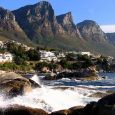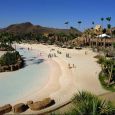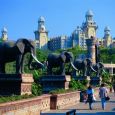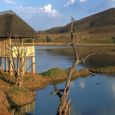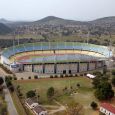Rustenburg
Advertisement
By Air
Travelling to Rustenburg by plane is a good option as Pilanesburg International Airport is nearby at the Sun City Rustenburg Aerodrome.There are limited domestic connections to Rustenburg Airport, although extra flights to Rustenburg will be laid on for the 2010 Soccer World Cup. As Johannesburg is so close, however, many people choose to fly into Johannesburg Airport and then drive to Rustenburg.
By Car
Many visitors find travelling to Rustenburg by car the best option.Rustenburg is only about an hour away from Pretoria along the N4 and Johannesburg comes up along the N1 shortly after.Note that the N4 is a toll road, which cost around R32 in 2010, but it is in great condition having recently been built.There is, however, a toll-free alternative, the R104, which runs parallel to the N4.You can also get from Johannesburg to Rustenburg on the R24 road.The Magaliesberg Nature Reserve offers splendid driving views.
By Bus
Travelling to Rustenburg by bus is easy as the city is en-route to Botswana.Most inner-city routes between Pretoria and Gabarone have a stopover at Rustenburg.Not all operators stopover at Rustenburg, however, so always check before you travel.Extra bus services from Rustenburg during the World Cup will also run from Royal Bafokeng Stadium to Pretoria and Johannesburg.
Madikwe Game Reserve
Is a part of the latest park developments in South Africa.It was opened in 1991 and comprises 750 km² of bushland north of the small town Groot-Marico up to the Botswana border.Madikwe lies on what used to be farm land, but owing to the poor soil type, farming was not that successful.After extensive research, the South African Government found that this land would best be utilised as a national park, to economically uplift this otherwise rather poor area.It has recently opened itself up to private farms outside the main reserve. Private users need to abide by parks board rules, animals can roam over any land, but there are restrictions as to where private vehicles can drive. There are 30 lodges on the property, and six lodges in the private farms outside the main reserve. Madikwe has started Community Lodges, which the local villages own and run. All profits are then used to uplift the communities.
SkyDive Rustenburg
Rustenburg, a host city for the 2010 FIFA Wold Cup, is located at the foot of the Magaliesburg mountain range in the North West Province of South Africa.Rustenburg SkyDiving Club operates every weekend and most Fridays, making use of an Atlas Angel (turbine) aircraft to go 12 000 feet up into the big blue playground in the sky.First Time SkyDivers and Tandem Jumpers, Sports SkyDivers and SkyDiving Teams of all disciplines are most welcome at SkyDive Rustenburg.
Royal Bafokeng Stadium
The Royal Bafokeng Stadium will host first and second round matches for the FIFA™ World Cup in 2010. Located in Rustenburg in the North West Province, Royal Bafokeng was opened in 1999 and completely funded by the Royal Bafokeng community.(An administrative entity presiding over the world's richest platinum mines).The capacity of the Royal Bafokeng was increased to 42 44,000 with the construction of two additional rows of seating on the second level. New electronic scoreboards, floodlights and a new public address system completed the requirements for it to host the first and second round matches of the 2010 World Cup in South Africa.
Pilanesberg National Park
which covers some 55 000 hectare, is the fourth largest in southern Africa.This malaria-free park is perched on the eroded vestiges of an alkaline volcanic crater one of only three such craters in the world.The history of the Pilanesberg Park is also unique amongst national parks in South Africa. Pilanesberg National Park's special features of rugged landscape, well-watered valleys and attractive dwelling sites have made it a preferred site for human settlement for thousands of years. Prior to its proclamation as a reserve in 1979, the Pilanesberg National Park Complex was degraded and depleted of indigenous wildlife populations due to fairly intense settlement by commercial farmers.At considerable expense, the land has been restocked with game, the scars of human settlement were removed and tourism infrastructure was developed during the first 15 years (1979 and 1993).This constituted the largest and most expensive game stocking and land rehabilitation project ever undertaken in any African game reserve at the time.
December - February
June - August


